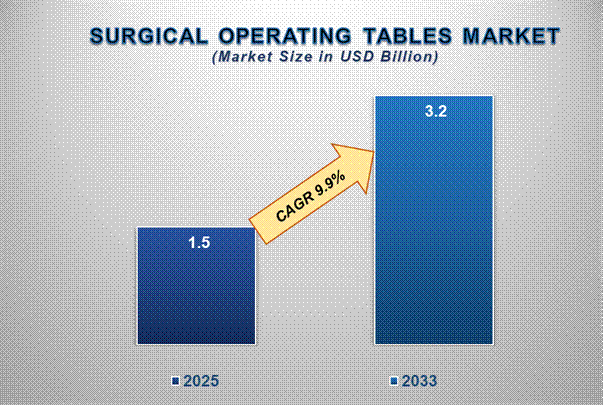Pakistan-China Cargo Network: A Complete Trade Overview

The Pakistan–China cargo network has developed into one of the most strategically important trade systems in Asia. Fueled by the China–Pakistan Economic Corridor (CPEC), improved cross-border logistics, and multimodal shipping routes, the corridor now supports high-volume trade, fast cargo movement, and broader regional connectivity.
As global supply chains evolve in 2025, businesses, governments, and logistics operators increasingly view the Pakistan–China cargo network as a critical trade lifeline linking South Asia with China, the Middle East, Central Asia, Africa, and Europe.
This complete overview explains how the network works, what drives its growth, and why it holds such immense trade potential.
1. The Strategic Foundation: CPEC
CPEC remains at the heart of Pakistan–China cargo operations, serving as a vast infrastructure and investment program connecting Gwadar Port to Xinjiang’s Kashgar region.
Key components supporting cargo movement:
-
High-speed motorways and highways
-
Karakoram Highway upgrades
-
Dry ports (Sost, Havelian, Faisalabad, Lahore)
-
ML-1 railway modernization
-
Gwadar deep-sea port expansion
-
Special Economic Zones (SEZs) for manufacturing and logistics
With continuous investment, CPEC has evolved into a multi-route, multi-modal trade corridor supporting heavy freight and international transit.
2. Road Freight: The Backbone of Cross-Border Cargo
The Pakistan–China road cargo link is anchored by the Karakoram Highway (KKH), one of the world’s highest and most engineered trade routes.
Road freight advantages:
-
Reliable all-weather connectivity
-
Faster delivery compared to sea routes for certain goods
-
Direct access from western China to Pakistani markets
-
Cost-effective transportation for machinery, textiles, and raw materials
The year-round opening of the Khunjerab Pass has further strengthened continuous freight movement, eliminating delays caused by seasonal closures.
3. Rail Connectivity: The ML-1 Transformation
The ML-1 railway upgrade under CPEC is set to reshape logistics across Pakistan.
Once fully operational, ML-1 will offer:
-
High-speed cargo trains
-
Double-tracked routes reducing congestion
-
Increased freight capacity for bulk and heavy goods
-
Direct linkages to dry ports and industrial zones
Rail will become a major contributor to Pakistan–China trade, especially for coal, minerals, industrial raw materials, and containerized cargo.
4. Sea Logistics: Gwadar, Karachi & Port Qasim
Sea shipping plays a crucial role in the cargo network.
Pakistan’s major ports are integrating more closely with China’s maritime routes.
Gwadar Port – the rising star
-
Deep-sea capabilities for mega-vessels
-
Strategic location near the Strait of Hormuz
-
Ideal for transshipment to Middle East & Africa
-
Key link in China’s Belt and Road maritime strategy
Karachi Port & Port Qasim
These ports handle the majority of Pakistan’s imports and exports, including trade flowing through CPEC.
Together, Pakistan’s ports provide a complete maritime logistics ecosystem, allowing diversified routes for China-linked cargo.
5. TIR Routes: Faster Middle East–China Trade Through Pakistan
One of the biggest breakthroughs is the TIR (Transports Internationaux Routiers) system, enabling sealed trucks to cross borders without repeated inspections.
Impact on Pakistan–China cargo:
-
Cuts transit times from 30 days to 10–12 days
-
Facilitates China–UAE and China–Saudi trade via Pakistan
-
Reduces logistics costs
-
Enhances security and transparency
The TIR corridor positions Pakistan as a bridge between China and the Gulf, attracting interest from global shipping markets.
6. Air Freight: Growing Demand for High-Value Cargo
Air cargo between Pakistan and China is increasing due to:
-
E-commerce growth
-
Demand for electronics, smartphones, and small shipments
-
Fresh food and perishables exports
-
High-value machinery imports
Major airports such as Islamabad, Lahore, and Karachi offer direct cargo flights to Chinese cities like Urumqi, Beijing, Guangzhou, and Shanghai.

7. Key Goods Moving Through the Pakistan–China Cargo Network
Pakistan → China exports:
-
Seafood (especially prawns & fish)
-
Textiles & apparel
-
Leather goods
-
Fruits, vegetables & meat
-
Minerals & ores
-
Sports goods
China → Pakistan exports:
-
Machinery & electronics
-
Mobile phones
-
Chemicals & industrial inputs
-
Solar equipment
-
Vehicles & spare parts
-
Construction materials
The diversity of goods demonstrates the corridor’s broad commercial potential.
8. Emerging Logistics Hubs & Dry Ports
To support growing trade, multiple hubs have emerged along the route:
-
Sost Dry Port – main gateway for China-bound trucks
-
Havelian Dry Port – upgraded for containerized cargo
-
Faisalabad & Lahore logistics zones – export-focused hubs
-
SEZs in Rashakai, Gwadar, Dhabeji, Allama Iqbal Industrial City
These hubs help reduce congestion at major cities while supporting regional manufacturing and distribution.
9. Digital Customs & Smart Trade Systems
Both Pakistan and China have modernized their customs operations to speed up cargo flow.
Digital improvements include:
-
E-clearance systems
-
Online manifests and cargo tracking
-
Risk-based inspections
-
Integrated border management
-
Paperless trade systems
These advancements streamline operations, making the corridor faster and more efficient.
10. Security, Stability, and Reliability
Improved security under CPEC has made transport safer along highways and ports.
Dedicated security forces and monitoring systems ensure uninterrupted cargo movement, which is essential for international trade confidence.
11. Pakistan–China Cargo Network in the Global Context
The cargo network is gaining global attention because it offers:
-
Shorted trade paths for China–Gulf trade
-
A reliable bypass to congested sea routes
-
Strong integration into China’s Belt and Road Initiative
-
New opportunities for regional energy, minerals, and supply chain industries
As global shipping faces disruptions in the Red Sea and Suez regions, the Pakistan–China network is emerging as a strategic alternative.
Conclusion
The Pakistan–China cargo network has evolved into a dynamic, multi-modal trade system that connects roads, railways, sea routes, and air corridors. With CPEC driving continuous development, the network now enables faster, cheaper, and more reliable cargo movement across the region.
For businesses, investors, and logistics providers, this corridor represents a powerful gateway to Asia, the Middle East, Africa, and beyond. As infrastructure expands and digital systems advance, the Pakistan–China trade network will play an even greater role in shaping future global supply chains.



